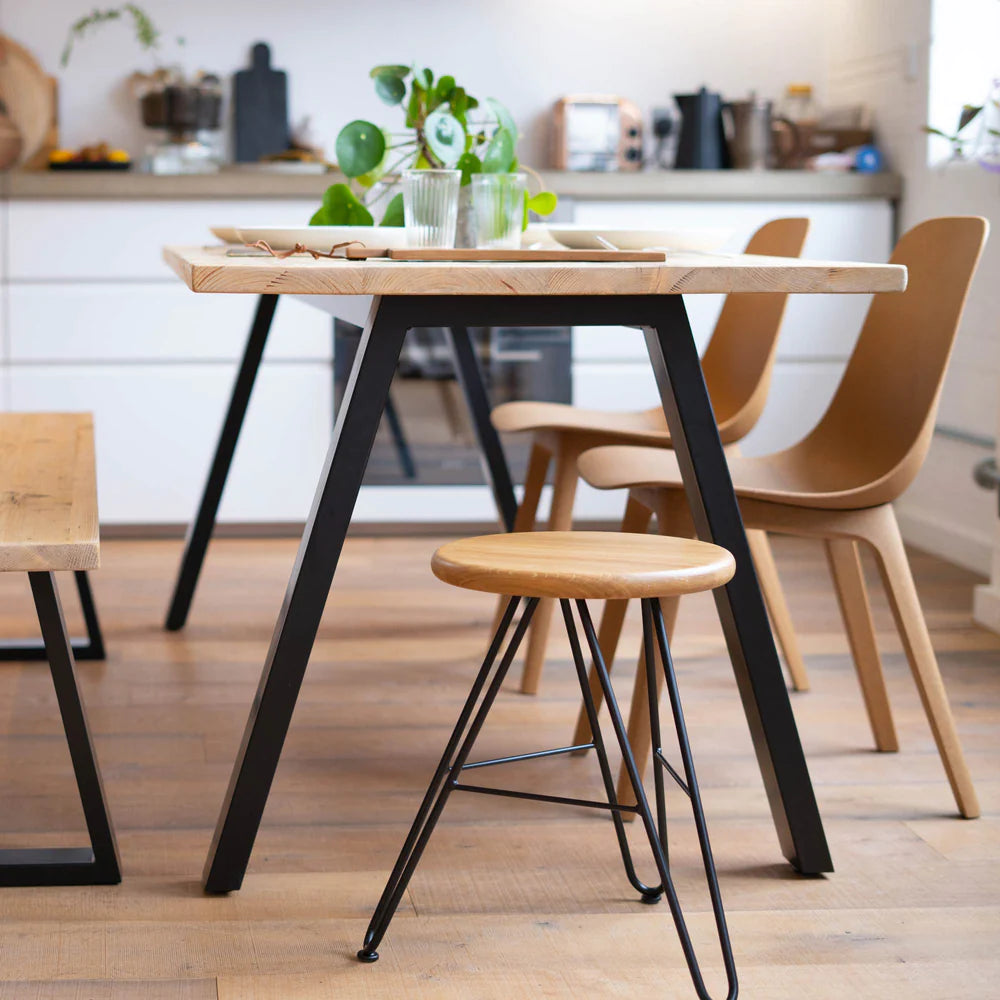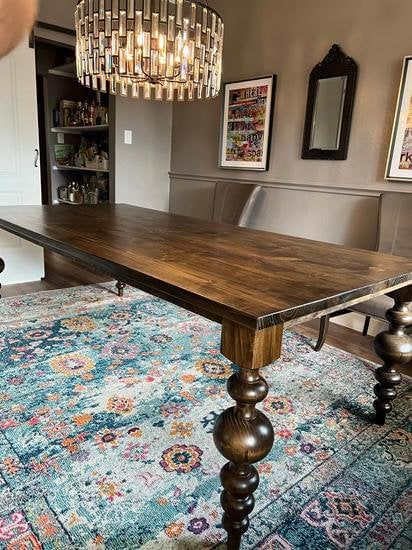From Traditional to Modern: Locate the Suitable Dining Area Table Legs for Your Style
While classic designs such as cabriole and turned legs evoke a sense of timeless refinement, contemporary styles like barrette and geometric options present a chance for striking aesthetic passion. As you think about these aspects, the inquiry remains: exactly how can you flawlessly integrate these varied leg styles to develop an unified eating experience?
Comprehending Table Leg Styles
The range of dining-room table leg designs can substantially influence both the visual appeals and functionality of the area. Each leg design adds distinct aesthetic components and practical functions, satisfying varied layout preferences and usage demands. Understanding these styles is crucial for choosing the best table that straightens with your total interior style vision.
For example, tapered legs offer a tidy, traditional appearance that can boost a room's style, while stand bases give security and maximize legroom, making them ideal for smaller spaces. Hairpin legs, a trademark of mid-century modern layout, introduce a commercial panache, permitting for a ventilated, open feel. Trestle legs evoke rustic charm, offering durable assistance and a feeling of eternity.
In addition, the selection of products plays a considerable function. Wooden legs can bring heat and appearance, whereas metal options frequently convey a sleek, modern vibe. Ultimately, comprehending table leg designs is vital for developing a cohesive dining location that reflects personal style while guaranteeing usefulness and convenience. By attentively considering these elements, you can improve both the functional and visual charm of your eating room.
Typical Table Leg Options
When selecting dining-room table legs, conventional choices usually personify classic beauty and craftsmanship. These styles show a rich heritage and a dedication to quality, making them suitable for those that appreciate traditional appearances.
One of one of the most iconic traditional leg designs is the cabriole leg, identified by its elegant curved shape. This design usually includes ornamental makings and is most commonly found in Queen Anne and Chippendale furniture. An additional prominent choice is the turned leg, which flaunts a collection of smooth, rounded forms that offer a traditional look while maintaining security.
Additionally, the straight leg, while simple, supplies a basic and durable framework that can mix flawlessly with a selection of tabletop styles. For those attracted to ornate describing, claw-and-ball feet legs evoke a feeling of magnificence and can work as a sensational centerpiece in any type of eating room.
Lastly, stand bases, although not purely legs, offer a different conventional alternative that permits for sufficient legroom and can be beautifully sculpted. Each of these traditional leg designs adds to the overall ambiance of an eating room, weding function with aesthetic allure.

Modern Table Leg Layouts
Modern table leg designs supply a diverse variety of styles that emphasize innovative materials and clean lines. These styles commonly focus on capability while functioning as striking centerpieces within an eating room. Minimalist appearances are widespread, with legs crafted from materials such as metal, glass, and engineered timber, which contribute to a airy and modern feeling.
One prominent layout is the barrette leg, identified by its slim, tapered structure that gives security without frustrating the tabletop (dining room table legs). This design is have a peek at these guys commonly discovered in mid-century contemporary furniture and can easily enhance numerous eating table shapes. Another trend is making use of geometric shapes, where legs might take on angular or unbalanced forms, adding visual interest and a touch of artistry

Mixing Styles for Unique Rooms
Commonly, house owners look for to useful content develop special dining rooms that reflect their personal design by mixing different design aspects. This method enables the consolidation of varied appearances, causing an unified yet distinctive atmosphere. Coupling a rustic wooden table with streamlined, modern-day steel legs can develop a captivating comparison that raises the space's overall appeal.
Additionally, incorporating vintage table legs with contemporary table tops can evoke a feeling of history while preserving a modern-day perceptiveness. Such mixes not only showcase specific taste however also urge imagination, allowing property owners to curate an area that feels both individual and welcoming.
Color plays a crucial duty in this mixing process; choosing table legs that complement or contrast with the existing color pattern can improve visual passion. For example, whitewashed legs can soften the boldness of a dark table surface, producing a well balanced aesthetic.
Tips for Selecting the Right Legs
Picking the right table legs is crucial for attaining both functionality and aesthetic appeal in your dining room. Begin by taking into consideration the total style of your room. Typical settings take advantage of legs that feature detailed makings or transformed designs, while contemporary spaces might require sleek, minimal designs.
Following, evaluate the elevation and stability of the legs. dining room table legs. Basic table range in between 28 to 30 inches in elevation, so guarantee the legs enhance useful source this dimension for comfort. Furthermore, durable products, such as hardwood or steel, can improve stability and longevity
Examine the leg form also-- alternatives consist of right, tapered, or pedestal designs. Straight legs provide a traditional look, while tapered legs can add a touch of sophistication. Pedestal bases provide adequate legroom and are optimal for smaller rooms.
Verdict
In summary, selecting the optimal dining area table legs calls for cautious consideration of both traditional and contemporary designs. Traditional options such as cabriole and transformed legs use classic elegance, while contemporary layouts like hairpin and geometric shapes give a contemporary touch. By harmonizing leg design, elevation, and material with the total decor, a cohesive and inviting ambience can be achieved. Ultimately, the picked table legs should mirror the preferred aesthetic, boosting the dining experience within the area.
The range of dining area table leg designs can dramatically influence both the aesthetic appeals and capability of the room. Eventually, comprehending table leg designs is vital for creating a cohesive dining location that mirrors individual design while ensuring practicality and comfort.One of the most famous conventional leg designs is the cabriole leg, defined by its graceful rounded form. Straight legs offer a timeless appearance, while conical legs can add a touch of sophistication.In summary, picking the ideal dining space table legs calls for careful consideration of both modern-day and typical styles.
Comments on “Dining Room Table Legs: A Guide to Selecting the Right Style for Your Home”